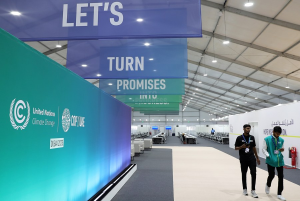According to a 26 November report in the Nihon Keizai Shimbun, direct investment in Southeast Asia is surging, with total investment in the region reaching a record $222.5 billion in 2022. In the background of the United States and China to start the hegemony struggle, Southeast Asia as a “buffer zone” to maintain an equal distance from the two countries is vigorously attracting investment. And once dominated the region’s investment in Japan’s presence is thinning.

According to the report, the U.S. State Department emphasised on the occasion of President Biden’s visit to Vietnam in September this year that “Vietnam will be a promising partner in ensuring diversity and resilience in the semiconductor supply chain.”
Seemingly in response to the State Department’s statement, US firms such as Meiman Electronic Technology Corporation and Synopsys Technology Corporation have expressed their willingness to invest. Semiconductor giant Micron Technology opened a new $1.6 billion plant in northern Vietnam’s Bac Ninh province in October, with plans to recruit 10,000 employees to create the world’s largest manufacturing base.
The Malaysian government announced in July that Chinese auto giant Zhejiang Geely Holding Group would invest $10 billion in Perak, a state in the west of the country, to create an automotive industry cluster. Geely is also planning to build an electric car factory in Thailand.
Reports indicate that U.S. and Chinese companies are hot on the M&A business. The US-based Kimberly-Clark, a giant in the daily chemical industry, acquired Softex, an Indonesian personal care industry player, for $1.2 billion in 2020, while China’s Alibaba Group is also contributing billions of dollars by 2023 to Singaporean e-commerce giant Lysander.
UNCTAD calculations show that the amount of investment received by the 11 Southeast Asian countries in 2022 was up 40 per cent from 2017, before trade friction erupted between the US and China.
Including the amount of investment in equipment such as factories under construction, the United States tops the list of inward investment received by Southeast Asia over the five years from 2018 to 2022 with $74.3bn, followed by China with $68.5bn, data from the Financial Times showed. U.S. investments in semiconductor-related industries in countries such as Singapore and Malaysia are particularly notable. China, on the other hand, has launched an offensive by building electric car factories in Thailand and mining in Indonesia.
U.S. and Chinese companies have shifted their production bases to Southeast Asia is also a reason. The U.S. is promoting “friendly-shoring” to shift supply chains from China to allied and friendly countries, while Chinese companies are building factories in third countries to reduce barriers to exports to Europe and the United States.
So why Southeast Asia? Reasons that can be thought of include proximity to manufacturing-intensive China, greater ease in rebuilding supply chains, general political and social stability, and the region’s large market of 600 million people is a huge attraction.
“Southeast Asia has taken full advantage of its ‘neutral status’ to benefit from the U.S.-China discord,” notes Wild Shigeru Iso, a senior economist at the Centre for ASEAN Economic Research in Southeast Asia.
Although Japan has taken the lead in exploring the Southeast Asian market since the 1970s, Japanese companies have lagged behind in the shift in investment focus to cutting-edge fields such as semiconductors, electric vehicles and power batteries. Southeast Asian governments looking for investment in advanced manufacturing are not aligned with the areas in which Japanese companies wish to invest. Japanese investment in Southeast Asia fell to $43.5 billion in the five years to 2022, the least in the past 20 years.
Indonesia fell to sixth place from third in 2012, and Thailand’s ranking also dropped, according to a survey by the Bank for International Co-operation 2022, as destinations where Japanese manufacturing firms want to develop business in the next three years. Japanese companies are looking for new ways to deal with Southeast Asia.

